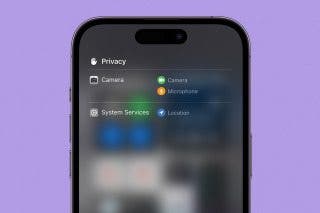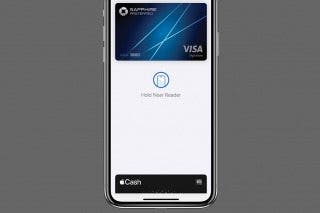Making Sense of Apple’s New iPhone Lineup: What Do the XR, XS & XS Max Bring to the Table?


When Apple released the original iPhone back in 2007, you had two models to choose from: 4 GB or 8 GB. Those were simpler times. There was only one color (black), and it was sold on one carrier (AT&T). While there was no App Store, no Siri, and no iCloud, there were also very few decisions you had to navigate. Fast forward to this September when Apple announced its new product lineup at the Steve Jobs theater, and the tech giant announced three new iPhones—the iPhone XS, the iPhone XS Max, and the iPhone XR. Each phone has a unique set of tradeoffs to analyze. Not to mention the fact that Apple still sells the iPhone 8 and the iPhone 7. If you count all the generations, sizes, storage options, and colors, you now have 69 different iPhones to choose from. Thankfully, we’re here to walk you through all the new devices and help you figure out which one is right for you.
Related: Everything You Need to Know about Apple Watch Series 4
The New iPhone Lineup at a Glance
iPhone XS
- Price: Starting at $999
- Availability: Ships September 21
- Finish choices: Gold, Silver, Space Gray
- Display size: 5.8 inches
- Display type: Super Retina edge-to-edge OLED with True Tone and 3D Touch
- Waterproof rating: IP68 water resistance in up to two meters for up to 30 minutes (as opposed to one meter for the iPhone X and XR)
- Storage capacity: 64 GB, 256 GB, 512 GB
- Processor: A12 Bionic chip with next-generation Neural Engine
- Battery: Lasts up to 30 minutes longer than iPhone X
- Charging: Wireless and Lightning port
- Dual SIM: Nano-SIM and eSIM
- Camera: 60 percent greater dynamic range for photo color than the iPhone X, dual wide-angle and telephoto lens, Smart HDR, Wide Color Capture, and auto image stabilization
- Video: 4K HD video recording with extended dynamic range and four microphones for stereo recording
- Charging: Wireless and Lightning port
iPhone XR
- Price: Starting at $749
- Availability: Preorder starts October 19, Ships October 26
- Finish choices: Red, Yellow, White, Coral, Black, Blue
- Display size: 6.1 inches
- Display type: Liquid Retina edge-to-edge LCD with True Tone
- Waterproof rating: IP67 water resistance in up to one meter for up to 30 minutes
- Storage capacity: 64 GB, 128 GB, 256 GB
- Processor: A12 Bionic chip with next-generation Neural Engine
- Battery: Lasts up to 1.5 hours longer than the iPhone 8 Plus
- Charging: Wireless and Lightning port
- Dual SIM: Nano-SIM and eSIM
- Camera: Wide-angle lens, Smart HDR, Wide Color Capture, and auto image stabilization
- Video: 4K HD video recording with extended dynamic range and four microphones for stereo recording
- Charging: Wireless and Lightning port
iPhone XS Max
- Price: Starting at $1,099
- Availability: Ships September 21
- Finish choices: Gold, Silver, Space Gray
- Display size: 6.5 inches
- Display type: Super Retina edge-to-edge OLED with True Tone and 3D Touch
- Waterproof rating: IP68 water resistance in up to two meters for up to 30 minutes
- Storage capacity: 64 GB, 256 GB, 512 GB
- Processor: A12 Bionic chip with next-generation Neural Engine
- Battery: Lasts up to 1.5 hours longer than iPhone X
- Charging: Wireless and Lightning port
- Dual SIM: Nano-SIM and eSIM
- Camera: 60 percent greater dynamic range for photo color than the iPhone X, dual wide-angle and telephoto lens, Smart HDR, Wide Color Capture
- Video: 4K HD video recording with extended dynamic range and four microphones for stereo recording
- Charging: Wireless and Lightning port
The Overlap: Common Features of the iPhone XR, XS & XS Max
Before we analyze the differences between Apple’s new phones, let’s take a look at the similarities. First and foremost, all three of the new iPhones have edge-to-edge displays. That means Apple has officially killed off the Home button and replaced Touch ID with Face ID. While Apple is still selling the iPhone 7 and 8, it is only a matter of time before the Home button goes the way of the headphone jack, which, with the retiring of the iPhone 6s, is now unavailable on any iPhone. We created a poll in iPhone Life’s private Facebook group, and 73 percent of people said they wouldn’t miss the Home button. Personally, I’ve been using the iPhone X for a year now, and while it took some time to adjust to, I don’t miss the Home button, and I love having the larger screen. A lot of people have complained about Face ID, but I’ve found it to be pretty reliable. While it’s not quite as consistent as Touch ID is now, it’s easy to forget how glitchy fingerprint technology used to be when Apple first released it. All in all, I think removing the Home button from all iPhone models is a move in the right direction.
All three of the new iPhones now support dual SIM cards. There are several use cases for this feature. Having two SIM cards means you can set up two separate numbers on your device, making it easy to manage your work and home number phone on one device. Another use case is for people who travel internationally. It’s typically cheaper to purchase a local SIM card in the country you’re visiting rather than sign up for an international plan with a carrier. Supporting dual SIM cards means you can use a local SIM for data, text, and calls, but still have your primary number available in case of emergency. For the many people who fall into either of these categories and who have been forced to use two phones or constantly swap SIM cards for the past decade, having the dual SIM option will be a game-changer. But for the majority of people, this feature won’t be an important factor when upgrading devices, and may not even be one most of us even notice.
Perhaps the most important update Apple announced was the A12 Bionic processor, which will be included in all three new iPhones. During the keynote, Apple executive Phil Schiller announced that the A12 is the industry’s first 7-nanometer chip, making it not only smaller but “without question the smartest and most powerful chip ever in a smartphone," Schiller said. Having a smaller chip allows the processors to function more efficiently while using less power. The end result is that performance is up 15 percent, and the chip will use 40 percent less power. For the end user, that means that apps will open quicker, and your phone will have a longer battery life. A more powerful processor also allows the iPhone to support more power-intensive apps, such as augmented reality and graphic-heavy games.
The A12 Bionic chip also features a beefed-up neural engine capable of processing five trillion operations a second. The neural engine powers your phone’s artificial intelligence (AI) and for functions such as Face ID, Siri, and Animoji. Apple is leveraging the new-and-improved neural engine to help it process photos, including a feature called Smart HDR. With Smart HDR, every time you take a photo, Apple is actually combining four separate pictures taken at different exposures and using AI to select the best parts of each photo. Using AI to improve photos is an emerging field called computational photography and Google has been leveraging similar techniques in its Pixel phone. The Google Pixel was widely considered the best smartphone camera, and Apple is playing catch up when it comes to computational photography. Nonetheless, utilizing a neural network for photography will make a huge difference in photo quality of the new iPhones.
In addition to utilizing computational photography, the new iPhones also have an improved camera system. While the actual lenses on the iPhone XS remain the same as the iPhone X, there is a new sensor that will allow for greater light sensitivity. This will be particularly helpful for low-light photography. The camera also has a next-generation True Tone flash. Both the new sensor and the new flash are available on all three iPhone models. The dual camera lens is only available on the iPhone XS and XS Max (more on that later).
iPhone XR: Standout Features
As mentioned above, the iPhone XR comes with the A12 Bionic chip. It sports a 6.1-inch edge-to-edge display, which is slightly larger than the 5.8-inch display of the iPhone XS. However, the display is LCD as opposed to OLED. It is a new high-quality display that Apple is calling Liquid Retina, which they claim is the best LCD in the industry. OLED technology, however, offers several advantages over LCD. OLED displays use less power than LCD displays and offer more vivid colors and better contrast. The final caveat with the iPhone XR screen is that for some reason Apple is not including 3D Touch. While 3D Touch is not a feature I use too often, I think I would miss not having it.
The iPhone XR comes with only one rear-facing camera, although it still offers a version of Portrait Mode thanks to a software solution (Google has taken a similar approach with the Pixel). The camera has the same new sensors as the iPhone XS but does not have the 2X optical zoom. It remains to be seen, how the software Portrait mode of the iPhone XR compares to the two-camera Portrait mMode of the iPhone XS. Personally, I really like having the iPhone 2X optical zoom on my iPhone X and would miss not having it. I also use Portrait Mode a lot and am concerned that it would be inferior on the iPhone XR.
The iPhone XR comes in five color options: Black, White, Red, Yellow, Blue, and Coral. Apple traditionally doesn’t offer bright colors for its flagship phones, so these are pretty unique. Because edge-to-edge displays are expensive to fix, though, I cover my phone in a protective case. Therefore, I’m not very concerned about colors, since I’ll rarely see them. A lot of people in our office, however, were excited about getting the blue version. The iPhone XR is made of aluminum instead of stainless steel. While stainless steel is a little stronger, I don’t think it’s a very important deciding factor.
iPhone XS: Standout Features
The iPhone XS is an upgraded iPhone X—it has the same form factor, the same 5.8-inch edge-to-edge display, and the same price. The major differences from the iPhone X are the ones already outlined; it has an upgraded processor and upgraded camera. The iPhone XS and XS Max also have a 512 GB storage option (was almost doubling the 256 GB option of the latest Plus phone). Most people will not need the 512 GB option, but if you are a content creator who shoots video in 4K or you take a huge number of photos, this will be a valuable option for you. It also means that the 256 GB of storage is cheaper for everyone.
iPhone XS Max: Standout Features
Two years ago, Apple released the iPhone 7 and 7 Plus. The iPhone 7 Plus had a beautiful large display but had an even larger form factor, which made it a little bulky. I opted for the Plus because of the larger display, even though I didn’t like how bulky it was. Then came the iPhone X. The edge-edge display allowed the iPhone X to have a big display like the iPhone 7 Plus but a smaller form factor that looks closer to the iPhone 7. Essentially, it allowed me to have my cake and eat it too. The iPhone XS Max is a similar form factor as the iPhone 7 Plus but has an edge-to-edge display like the iPhone X (and XS). This means going back to the slightly bulkier form factor, but in exchange you get a beautiful 6.5-inch OLED display. And the kicker is that it’s only $100 more than the iPhone XS. Other than the larger size, the iPhone XS Max has virtually the same specs as the iPhone XS. The only other discernable difference is that the battery life is very slightly longer on the iPhone XS max.
Buyer’s Guide: Which iPhone Is Right for You?
The iPhone XR is likely the best phone for most people. It’s a great balance between price and features. At $750, it’s hard to call it a budget phone, but it’s still $250 less than the iPhone XS and has an excellent feature set. If you are in the market for a new iPhone but don’t feel that you need all the bells and whistles, then you can’t go wrong with the iPhone XR.
The iPhone XS is the awkward middle child of the iPhone family. It’s not as cheap as the iPhone XR and it doesn’t have the enormous screen of the iPhone XS Max. Depending on your preferences, it might hit the sweet spot of features. It comes down to how much you care about the OLED display and the dual camera. If you’re willing to pay a premium for the OLED display and the dual camera system but don’t need an enormous screen, then the iPhone XS is a great choice. The iPhone XS is also slightly thinner and lighter than the iPhone XR, which is nice.
How you feel about the iPhone XS Max comes down to how excited you are about a larger screen. While, at $1,099, the iPhone XS Max is the most expensive iPhone ever made, the $100 price hike from the XS feels reasonable for an OLED display that large. In talking to our readers, I discovered that a lot of people find the larger screens to be easier on their eyes. If you are in that camp or if you simply watch a lot of videos on your phone, then this might be the perfect device for you. For some though, the larger form factor is a major inconvenience. Not only is it more difficult to fit your phone into your pocket or a purse, it’s also going to be virtually impossible to use the phone with one hand.
Many people were holding out until the announcement, hoping they would be able to purchase the iPhone X at a discounted rate. Interestingly, Apple has discontinued sales of the iPhone X. My personal opinion is that if you have an iPhone X, the only reason to upgrade devices this year is if you want the 6.5-inch display on the Max. The improved camera and processor will make a difference, but they aren’t improved enough to justify the cost of upgrading from the iPhone X.
Apple is continuing to sell the iPhone 7 (starting at $449) and iPhone 8 (starting at $599). I wouldn’t recommend purchasing either of these phones. The iPhone 7 has a processor which is now two generations old. If you’re going to invest in a new phone, buying one with technology that’s already a couple of years behind doesn’t seem wise. The iPhone 8 still has a powerful processor and is a great phone, but it’s only $150 cheaper than the iPhone XR, which in my opinion is a much better phone. The main reason to purchase an iPhone 8 over the iPhone XR (other than price) is if you are attached to the Home button and Touch ID.

David Averbach
David Averbach is the CEO and Publisher of iPhone Life. In the last 13 years, he has shared his Apple expertise on multiple industry panels, was awarded FOLIO magazine’s 2014 media industry’s innovators 20 in Their 20s, taught classes for our premium subscribers, and co-hosted over 200 episodes of the iPhone Life Podcast. A lifelong Apple fan, David would be lost without his MacBook Pro, iPhone, iPad Pro, Apple Watch HomePod, Apple TV, and AirPods. In his free time, David enjoys optimizing his smart home setup, savoring a good cup of coffee, and traveling.
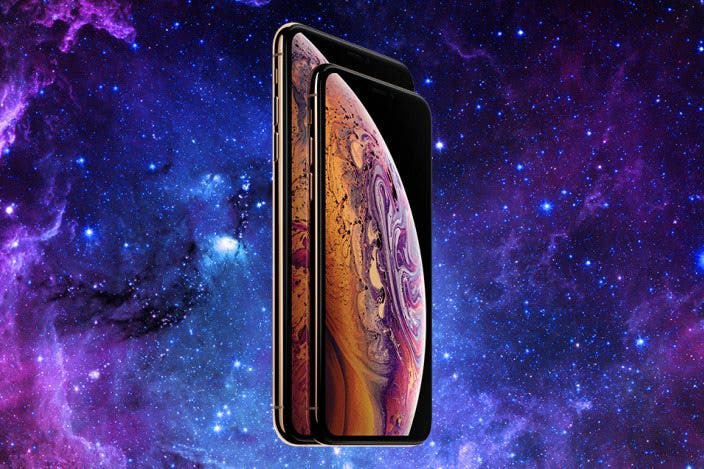
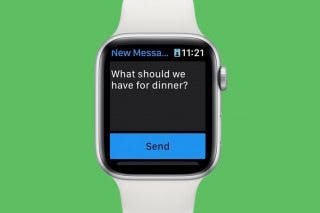
 Rhett Intriago
Rhett Intriago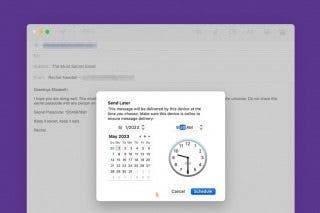
 Rachel Needell
Rachel Needell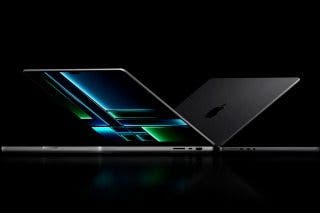
 Cullen Thomas
Cullen Thomas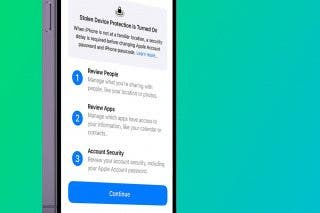
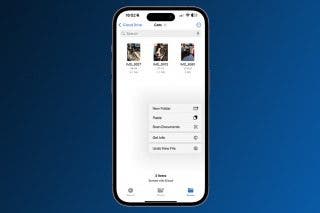
 Olena Kagui
Olena Kagui
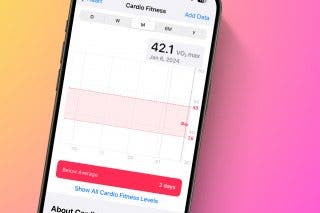
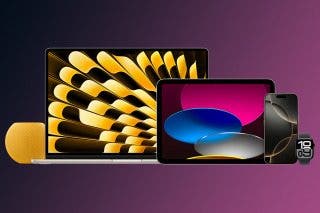
 Amy Spitzfaden Both
Amy Spitzfaden Both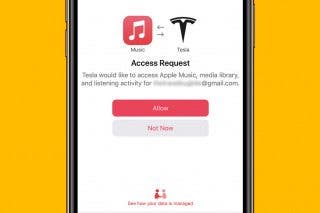

 Hal Goldstein
Hal Goldstein
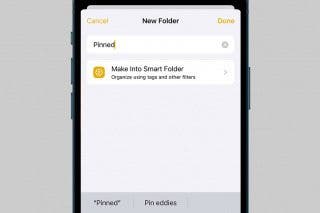
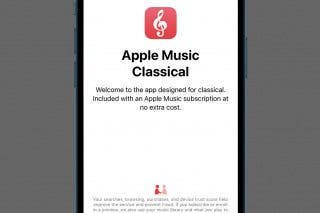
 Leanne Hays
Leanne Hays
